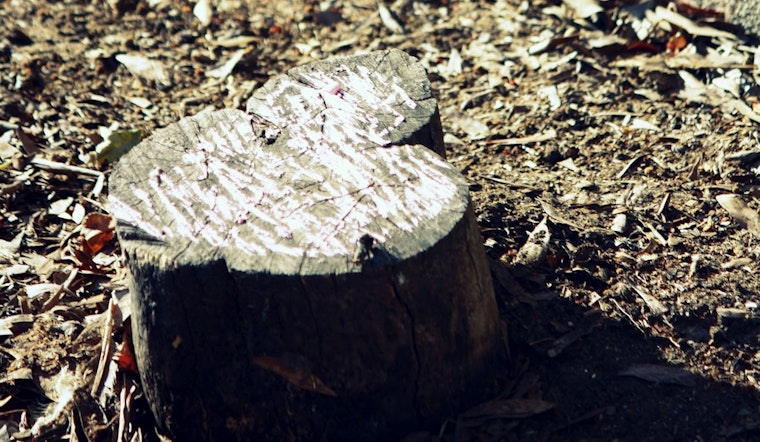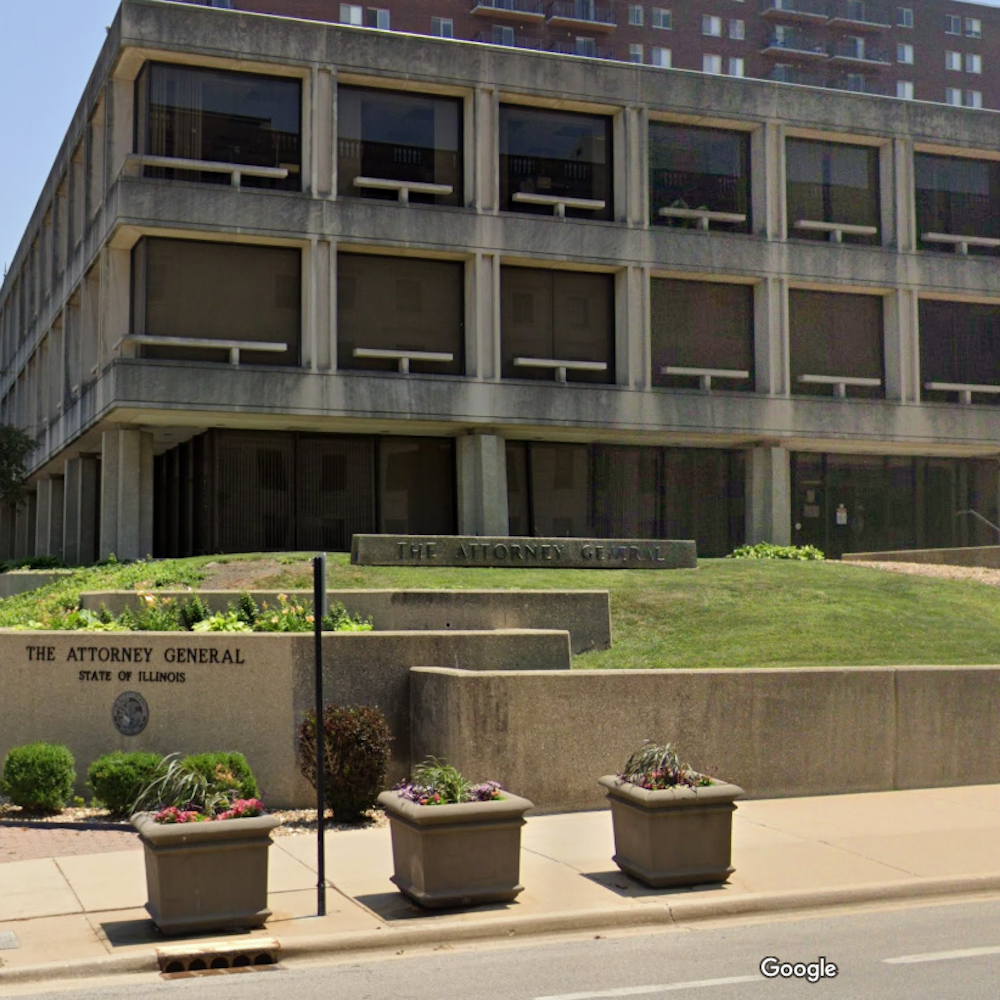
The last piece in our week of guest posts comes from hyper-local big-deal author and journalist Laura Fraser.
Not long after I moved into the Haight-Ashbury, more than twenty years ago, a hippie friend gave me a redwood seedling and told me to go plant a tree. This particular sequoia sempervirens was about three inches tall, and it seemed like a foolish gift, a futile gesture of idealism. It’s one thing to write a check to help save 300-year-old redwoods in Humbolt County, but that poor tree had little hope of surviving in the transitory Haight. Still, I put it in a pot and watered it occasionally. Other than that, for the next few years, I ignored the redwood. It was a straggly thing, always on the edge of expiring. But it survived on top of the piano in my Victorian flat, and presided over a household of ever-changing roommates: a chef who ran off to join the circus, a South African refugee, a Mexican journalist, and one artist or musician after another. By the time the household had settled down to just two, the redwood had grown into a tiny Christmas tree, strong enough to hold a few dangly earrings as ornaments. I never intended to stay in the Haight so long. I live a block from the corner of Haight and Ashbury, where tourists snap photos and buy tie-dyed t-shirts, and I tell people that if my neighborhood weren’t close to Golden Gate Park, I wouldn’t like to live here. The Haight’s hippie history is embarrassing, as if I smelled like patchouli by association, and here in middle age I’ve caught myself saying I live in Cole Valley instead. The Haight has always been grungy, a magnet for runaways and druggies; I get tired of walking past discarded couches, pizza boxes, and pools of vomit, and the fact that it’s the only neighborhood where you can buy pot and a pipe to smoke it in at three in the morning isn’t much of an advantage. For awhile, people sold crack on the corners, and the neighborhood’s seamy edge turned menacing, but they, too, moved on. It is not a place where most people stay. I’ve stayed because my flat has high ceilings, hardwood floors, a huge garden--and rent control. Built in 1910 almost entirely of redwood, it swayed gracefully in the 1989 earthquake, without displacing a single object. Rent-controlled, it helped me weather the dot-com boom and stay in the City I love--unlike many artists and musicians who had to move on. The Haight-Ashbury has always been uneasily composed of those who can afford the ever-increasing rents versus those who cram six to a flat or sleep on the streets, but in recent years, it has become even more polarized. Middle-class renters like me—writers, artists, teachers, non-profit staff--seem to be in the minority. The homeless people, familiar faces after all these years, look increasingly desperate, and the line for food at the church on my street stretches the entire block. Cafes where you could once hang out all day have made way for boutiques, and home prices have reached the millions. But a few long-time establishments remain, making the Haight a real neighborhood, where sales clerks greet you by name, ask how you liked that book or movie, help you pick out the best tomatoes, or explain how to dye fabric or put up your shelves. There are no chain stores here—even the Gap moved on—and however raggedly hippie it may be, the Haight prides itself on its idealistic, independent spirit. I grew roots in the Haight: I tended the garden, planting rosemary, agapanthus, Mexican sage, cala lilies, and whatever else could withstand the snails. Eventually, I decided to transfer my sad little redwood tree to the soil, too. Optimistically, I gave it plenty of room, along with extra water and soil, since the Haight is built on sand dunes. Every so often I plucked snails from its delicate limbs and sometimes wondered how long it would take to die. Then we had El Nino, the nine-umbrella winter of endless rain. When I finally ventured into the garden in spring, the redwood tree had disappeared under huge fennel fronds and grass. I weeded and was surprised: suddenly, my tree was three feet tall. It had grown a skin of red bark, as if it had gone through puberty. I felt proud. After this winter’s rainstorms, my redwood tree is as tall as I am. I stand next to it as if beside a child I never had, measuring on tip-toes. Now I’m certain of its survival, and glad I have at least replaced one of the millions of redwoods that were logged to build houses like the one I’ve gratefully inhabited for so long. Only five percent of the two million acres of redwoods that lined this coast remain—though I doubt any of them sprouted in this particular soil. Still, I hope that long after I’m gone, after we’re all gone, my redwood tree will live on. It sometimes seems as if there’s so little we can do to help save this planet, and even some of the latter-day hippies panhandling on Haight Street have stopped being optimistic about peace, love, and Mother Earth. But the morning sun shines through the leaves in Golden Gate Park, musicians tune up their guitars, and we do each day what we can: take public transportation, compost, recycle, use less energy, donate to environmental groups, save rent control, plant a tree. That may sound idealistic, but I can’t help it: I am a citizen of the Haight-Ashbury. ------------- Thanks, Laura!
Not long after I moved into the Haight-Ashbury, more than twenty years ago, a hippie friend gave me a redwood seedling and told me to go plant a tree. This particular sequoia sempervirens was about three inches tall, and it seemed like a foolish gift, a futile gesture of idealism. It’s one thing to write a check to help save 300-year-old redwoods in Humbolt County, but that poor tree had little hope of surviving in the transitory Haight. Still, I put it in a pot and watered it occasionally. Other than that, for the next few years, I ignored the redwood. It was a straggly thing, always on the edge of expiring. But it survived on top of the piano in my Victorian flat, and presided over a household of ever-changing roommates: a chef who ran off to join the circus, a South African refugee, a Mexican journalist, and one artist or musician after another. By the time the household had settled down to just two, the redwood had grown into a tiny Christmas tree, strong enough to hold a few dangly earrings as ornaments. I never intended to stay in the Haight so long. I live a block from the corner of Haight and Ashbury, where tourists snap photos and buy tie-dyed t-shirts, and I tell people that if my neighborhood weren’t close to Golden Gate Park, I wouldn’t like to live here. The Haight’s hippie history is embarrassing, as if I smelled like patchouli by association, and here in middle age I’ve caught myself saying I live in Cole Valley instead. The Haight has always been grungy, a magnet for runaways and druggies; I get tired of walking past discarded couches, pizza boxes, and pools of vomit, and the fact that it’s the only neighborhood where you can buy pot and a pipe to smoke it in at three in the morning isn’t much of an advantage. For awhile, people sold crack on the corners, and the neighborhood’s seamy edge turned menacing, but they, too, moved on. It is not a place where most people stay. I’ve stayed because my flat has high ceilings, hardwood floors, a huge garden--and rent control. Built in 1910 almost entirely of redwood, it swayed gracefully in the 1989 earthquake, without displacing a single object. Rent-controlled, it helped me weather the dot-com boom and stay in the City I love--unlike many artists and musicians who had to move on. The Haight-Ashbury has always been uneasily composed of those who can afford the ever-increasing rents versus those who cram six to a flat or sleep on the streets, but in recent years, it has become even more polarized. Middle-class renters like me—writers, artists, teachers, non-profit staff--seem to be in the minority. The homeless people, familiar faces after all these years, look increasingly desperate, and the line for food at the church on my street stretches the entire block. Cafes where you could once hang out all day have made way for boutiques, and home prices have reached the millions. But a few long-time establishments remain, making the Haight a real neighborhood, where sales clerks greet you by name, ask how you liked that book or movie, help you pick out the best tomatoes, or explain how to dye fabric or put up your shelves. There are no chain stores here—even the Gap moved on—and however raggedly hippie it may be, the Haight prides itself on its idealistic, independent spirit. I grew roots in the Haight: I tended the garden, planting rosemary, agapanthus, Mexican sage, cala lilies, and whatever else could withstand the snails. Eventually, I decided to transfer my sad little redwood tree to the soil, too. Optimistically, I gave it plenty of room, along with extra water and soil, since the Haight is built on sand dunes. Every so often I plucked snails from its delicate limbs and sometimes wondered how long it would take to die. Then we had El Nino, the nine-umbrella winter of endless rain. When I finally ventured into the garden in spring, the redwood tree had disappeared under huge fennel fronds and grass. I weeded and was surprised: suddenly, my tree was three feet tall. It had grown a skin of red bark, as if it had gone through puberty. I felt proud. After this winter’s rainstorms, my redwood tree is as tall as I am. I stand next to it as if beside a child I never had, measuring on tip-toes. Now I’m certain of its survival, and glad I have at least replaced one of the millions of redwoods that were logged to build houses like the one I’ve gratefully inhabited for so long. Only five percent of the two million acres of redwoods that lined this coast remain—though I doubt any of them sprouted in this particular soil. Still, I hope that long after I’m gone, after we’re all gone, my redwood tree will live on. It sometimes seems as if there’s so little we can do to help save this planet, and even some of the latter-day hippies panhandling on Haight Street have stopped being optimistic about peace, love, and Mother Earth. But the morning sun shines through the leaves in Golden Gate Park, musicians tune up their guitars, and we do each day what we can: take public transportation, compost, recycle, use less energy, donate to environmental groups, save rent control, plant a tree. That may sound idealistic, but I can’t help it: I am a citizen of the Haight-Ashbury. ------------- Thanks, Laura!









